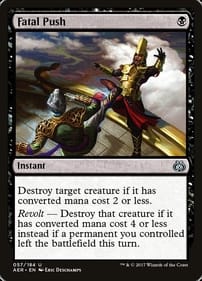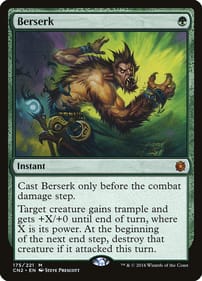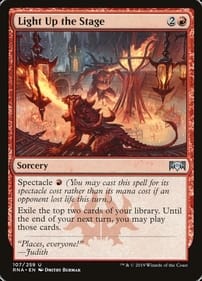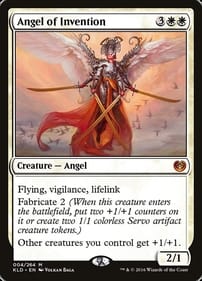Magic: The Gathering (MTG) is a beloved collectible card game that brings together strategy, fantasy, and skill into a single, thrilling experience. Whether you’re a seasoned gamer or a complete beginner, creating your own Magic The Gathering Deck can be a rewarding and fun challenge. This blog will guide you through the essential steps to build your first deck, offering practical advice and tips to help you get started.
1. Understand the Basics of a Magic The Gathering Deck
Before diving into deck building, it's important to understand what constitutes a Magic The Gathering Deck. A standard deck comprises 60 cards, with the possibility of including up to 15 additional sideboard cards for tournament play. Your goal is to create a well-balanced deck that combines lands, creatures, spells, and other card types in a way that supports your chosen strategy.
Mana and Colors
In MTG, there are five colours of mana, each representing different types of magic and strategies: White, Blue, Black, Red, and Green. Each colour has unique characteristics:
- White focuses on protection and order.
- Blue emphasizes control and knowledge.
- Black deals with power and sacrifice.
- Red is all about aggression and chaos.
- Green celebrates growth and nature.
Choosing the right colour or combination of colours is crucial. Beginners might find it easier to start with a single colour to simplify deck construction and gameplay. As you gain experience, you can explore more complex multi-colour strategies.
2. Choose Your Format
MTG offers various formats for deck building, each with its own rules and deck-building requirements. For beginners, the Standard format is often recommended. It uses cards from the most recent sets, ensuring a more straightforward deck-building experience and easier access to cards.
Types of Formats
- Standard: Focuses on cards from the latest sets, ideal for newcomers.
- Commander: A unique format where decks consist of 100 cards with a single legendary creature as the commander.
- Modern: Uses a broader range of cards from past sets, providing more flexibility and complexity.
Each format has specific rules about deck size and card legality, so be sure to familiarize yourself with these before starting.
3. Pick Your Win Condition
A well-designed Magic The Gathering Deck revolves around a clear win condition, which defines how you plan to achieve victory. Common win conditions include:
- Aggro: Quickly overwhelm your opponent with fast, powerful creatures.
- Control: Focus on controlling the game through spells and abilities while gradually gaining an advantage.
- Combo: Use specific card combinations to achieve an instant win or game-breaking effect.
Synergy and Theme
Synergy refers to the way your cards work together to support your win condition. Building your deck around a theme or specific mechanic (like a tribe of elves or goblins) can enhance this synergy. For example, a deck themed around vampires might include cards that boost other vampire creatures or provide benefits when you gain life.
4. Select Key Cards
Every deck should have a core set of key cards that are central to your strategy. These could be powerful creatures, spells, or artifacts that align with your win condition. For beginners, starting with a few strong, versatile cards can provide a solid foundation.
Choose a Key Card or Engine
A key card or engine drives your deck’s strategy. For instance, if you’re building an aggressive deck, cards like "Chandra, Pyromaster" or "Lightning Bolt" can be instrumental in quickly dealing damage. For a control deck, "Teferi, Hero of Dominaria" or "Counterspell" might be crucial.
Support Cards
Alongside your key cards, you’ll need support cards to enhance your strategy and ensure your deck functions smoothly. This includes cards that provide card draw, removal, or mana fixing. A balanced deck will have a mix of these support cards to maintain consistency and adaptability during matches.

5. Balance Lands and Mana Curve
Land Ratio
Lands are essential for casting spells and summoning creatures. A typical 60-card deck usually includes around 24 lands. This number can vary depending on your deck's mana curve and strategy. For instance, a deck with many low-cost spells might need fewer lands, while a deck with more expensive spells may require additional lands.
Mana Curve
The mana curve is a visual representation of the cost of your cards. A well-balanced mana curve ensures that you have plays to make at every stage of the game. To achieve this, include a mix of low, mid, and high-cost cards. Avoid loading your deck with too many high-cost cards, as this can lead to slow starts and missed opportunities.
6. Test and Tweak Your Deck
Playtesting
Once you’ve assembled your deck, playtest it in casual games to see how it performs. Testing will help you identify strengths and weaknesses, and understand how your deck functions in various scenarios. Pay attention to how often you draw your key cards, and whether your mana base is reliable.
Adjustments
Based on your playtesting experience, make adjustments to improve your deck. This could involve replacing underperforming cards, adjusting your mana base, or tweaking your strategy. For example, if you find you’re frequently running out of cards, consider adding more draw spells or card advantage mechanisms.
Upgrade Over Time
As you become more familiar with the game, you can start upgrading your deck with stronger cards. This might involve acquiring rare or powerful cards that enhance your deck’s performance. However, remember that a well-constructed deck with a clear strategy can be very effective even with a modest collection.
7. Utilize Online Resources
Deck-building Websites and Tools
Several online resources can assist you in building and refining your deck. Websites like MTGGoldfish and TappedOut offer deck-building tools, strategies, and decklists from other players. These resources can provide inspiration and help you fine-tune your deck.
Learning from Others
Engage with the MTG community through forums, social media, and local game stores. Watching experienced players and reading articles can provide valuable insights and tips. Don’t hesitate to seek advice from more experienced players who can offer guidance and feedback on your deck.
In Summary
Building your first Magic The Gathering Deck is an exciting and rewarding experience. By understanding the basics of deck construction, choosing the right format, picking a win condition, and balancing your deck, you can create a competitive and enjoyable deck. Remember to test and tweak your deck, and utilize online resources to enhance your skills. Embrace the process, enjoy the journey, and most importantly, have fun crafting your Magic The Gathering Deck!
Ready to start building your deck? Dive into the world of Magic: The Gathering and discover the thrill of creating and mastering your own deck. If you have any questions or need expert advice, feel free to reach out to us at Obsidian Games!






